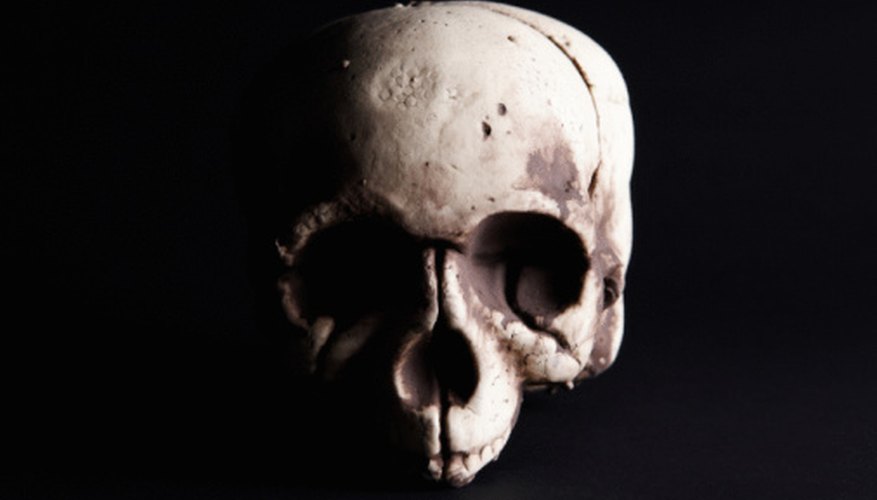Voodoo is considered the oldest African religion. It was brought to America by migrating West African slaves. The largest voodoo community is in Haiti, though their followers can be found in North and South America. Practical voodoo considers the human being as a whole, both body and spirit. Loas or orishas, spirits of ancestors, protect their people and guide them toward healing and happiness through dances, spells and mystic ceremonies. These rituals include symbols of life and death, such as skulls and skeletons.
Healing Dance and Skulls
The healing dance is the principal ritual of voodoo. The ceremony is aimed toward giving spiritual and physical health to suffering people. Illness is seen as the evil influence of spirits of death. While the dance progresses, it becomes more and more intense until the healer-dancers go into a state of deep concentration and then they are able to cure people. The dancer has an object, the "n/um" in its stomach. This "n/um" travels across the spine until it reaches the skull. There it stops and explodes in the brain. This explosion is the sign of a rebirth and the reason why the skull is the symbol of a new life oriented toward the right way according to the good spirits of the ancestors.
- The healing dance is the principal ritual of voodoo.
- This "n/um" travels across the spine until it reaches the skull.
Baron Samedi
The Baron Samedi is a loa, an ancestral spirit who is identified as the spirit of death. This divinity is not originally from Africa. He was born in Central America as a malicious god. He is more frequently represented as a dressed man with a partial or total skull as his face. Despite his characterisation as the symbol of death, the myth states that he has the power to accept or deny a human into his dominion. He has the power of resurrection and it's the reason why we can say that he is the icon of life and death. Again, a skull is the symbol of both of these extreme instances of life.
- The Baron Samedi is a loa, an ancestral spirit who is identified as the spirit of death.
- Despite his characterisation as the symbol of death, the myth states that he has the power to accept or deny a human into his dominion.
Skull Candles
Skull candles are essential cult objects for most voodoo rituals. They are used on altars to assist believers in calling the loas. Basically, these skull-shaped candles are coloured depending on the influence that you want to exercise on the spirits. The white skulls are good for healing or protective rituals, as well as for spiritual cleansing. Red skull candles are used in spells for love or relationship issues. The black candles are part of hexing rituals and spells. Skulls, as rebirth symbols, are used as vehicles to call the ancestors.
- Skull candles are essential cult objects for most voodoo rituals.
- The black candles are part of hexing rituals and spells.
Bones and Skulls in New Orleans
In New Orleans, the Mardi Gras festivity, the last day of indulgence before Ash Wednesday, is combined with voodoo rituals. Parades organised by Americans are blended with typical dancing rites of Creole voodoo believers. Structured in societies or "gangs," they dance as a means to call spirits. One of these gangs, "Bones & Skulls," has developed a more serious ceremony. They don't have any commercial interests and preserve their religious and social purposes. People from Bones & Skulls dress in dark clothes decorated with skeletons and paper-mache skull heads. They look for children and advise them on the right way to live their lives in order to have the chance to be visited by the "skull and bones" spirit, spirits of goodness.
- In New Orleans, the Mardi Gras festivity, the last day of indulgence before Ash Wednesday, is combined with voodoo rituals.
- They look for children and advise them on the right way to live their lives in order to have the chance to be visited by the "skull and bones" spirit, spirits of goodness.
